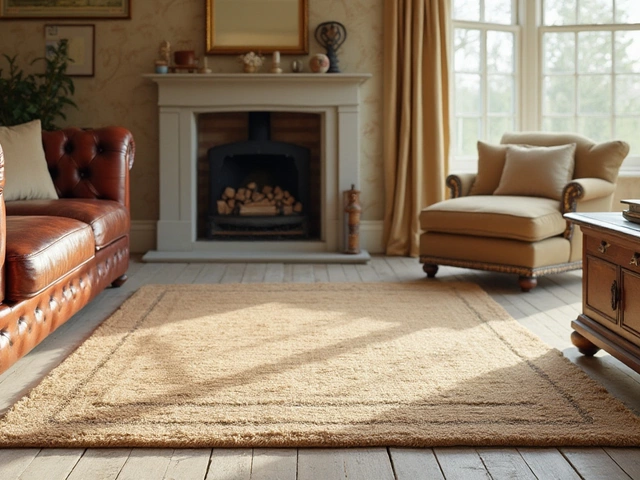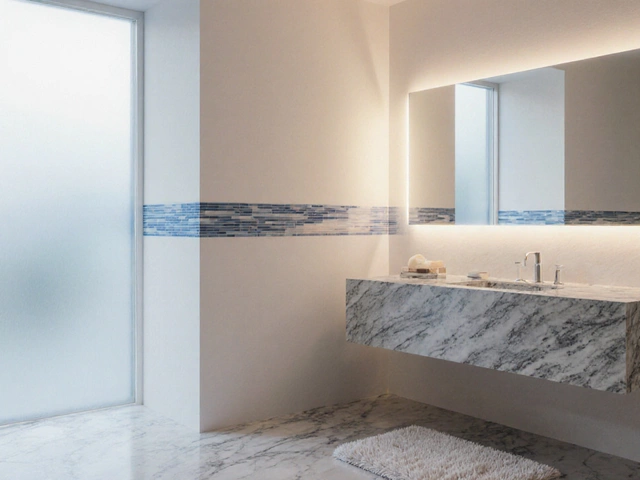Home Modifications Made Simple: Quick Changes for a Better Space
Ever walk into a room and think, "This could be so much better?" You don’t need a full renovation to feel a big difference. Small, smart tweaks can lift comfort, style, and even accessibility without breaking the bank. Below are practical ideas you can start this weekend.
Smart Storage Tricks for Tiny Homes
When floor space is at a premium, think vertical. Install floating shelves in under‑used corners and line them with inexpensive shelf liners – they protect surfaces and make cleaning a breeze. Use the backs of doors for hanging organizers; they’re perfect for shoes, cleaning supplies, or pantry items. A 10x20 storage unit guides you on how many rooms of belongings fit, but you can mimic that efficiency at home by grouping similar items in clear bins and labeling them.
Lighting and Mirror Hacks
Good lighting instantly widens a room. Swap out a single harsh bulb for a warm LED strip behind mirrors or under cabinets. Speaking of mirrors, choosing the right shape matters. A tall, narrow mirror adds height to low‑ceiling rooms, while a circular piece softens sharp angles. Even a simple plane mirror can double the light if placed opposite a window.
Got a hallway that feels like a tunnel? Hang a large mirror at the far end and add a wall‑sconce for a layered glow. If you’re curious about different mirror types, remember that concave mirrors magnify, convex ones widen your view, and plane mirrors stay true. Pick what fits your style and function.
Floor Coverings That Stay Fresh
Rugs add comfort, but they can be a cleaning nightmare. Choose low‑maintenance materials like polypropylene or indoor‑outdoor blends – they resist stains and are pet‑friendly. Washable rugs let you toss them in the machine, saving time and money. Keep a rug pad underneath to prevent slipping and extend the rug’s life.
Curtain Lengths That Look Right
Too short, and curtains look unfinished; too long, and they gather dust. A good rule of thumb is to let curtains hover about two inches above the floor for a clean look, especially in high‑traffic rooms. If you prefer a dramatic floor‑kiss, add a half‑inch of extra length for a subtle break. Consistency across a room isn’t mandatory – mix widths and patterns for visual interest, just keep the lengths uniform.
Sofa Comfort and Size Basics
Choosing the right sofa isn’t just about style; depth matters. A seat depth of 22‑24 inches suits most people for lounging, while a deeper 26‑28 inches works for taller folks. When space is limited, the popular three‑seater size (around 84 inches) fits most living rooms without overwhelming them. Pair the couch with cushions in trending 2025 colors – bold blues, warm terracotta, or calming sage – to refresh the look without buying new furniture.
If you’re debating a couch versus a sectional, think about traffic flow. A sectional can define zones in an open plan, but a compact couch keeps pathways clear. Check the average markup on sofas – retailers often add 40‑60%. Knowing this helps you spot deals and avoid overpaying.
Accessibility and Comfort Upgrades
Adjustable beds aren’t just for luxury; doctors note they can ease back pain and improve sleep quality. Adding a hand‑rail in the bathroom or a non‑slip mat near the bathtub makes daily routines safer. Small changes like these count as home modifications that enhance wellbeing.
Ready to start? Pick one area, gather a few tools, and set a timer for an hour. You’ll be surprised how much a little effort can transform a space. Keep this list handy, try a tip, and watch your home feel brand new.

Does Medicare Cover Bathroom Remodels?
Are you wondering if Medicare will cover the cost of remodeling your bathroom? This informative article breaks down the details you need to know about Medicare's home modification coverage, specifically regarding bathroom remodels. Learn about the requirements, what's typically covered, and some handy tips to make your home safer if you're a Medicare recipient.
Categories
- Storage (27)
- Bathroom (18)
- Sofas (15)
- Curtains (15)
- Home Decor (12)
- Bedding (11)
- Kitchenware (11)
- Cushions (11)
- Mirrors (10)
- Rugs (9)
Popular Articles



